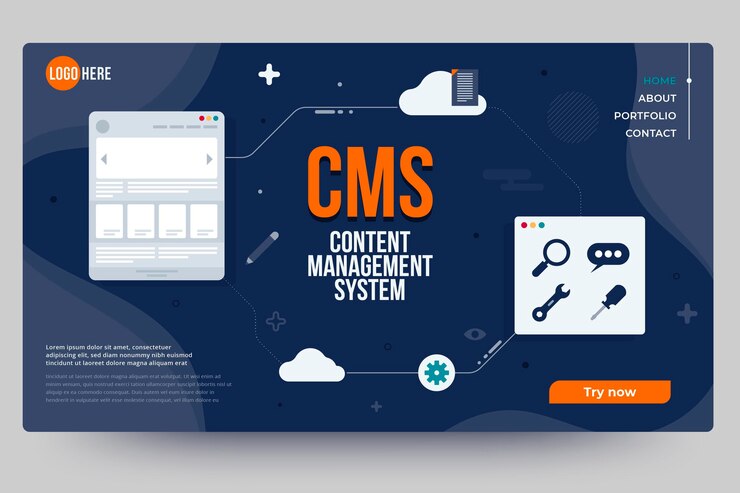Building scalable SaaS applications has become essential for businesses looking to grow. As your customer base increases, your software needs to handle more users, data, and traffic without slowing down. In this article, we will explore practical ways to ensure your SaaS application can scale smoothly and meet growing demands.
Understanding Scalability in SaaS Applications
Scalability refers to a system’s ability to grow and handle increased usage. In SaaS, scalability ensures that your application continues running efficiently as more users come on board. There are two types of scalability: vertical scaling and horizontal scaling. Vertical scaling adds capacity to your existing system by increasing resources, like CPU or memory. Horizontal scaling adds more servers to distribute the workload.
For businesses, scalability means better performance, happier users, and cost savings. A scalable system adjusts to rising traffic without crashing or slowing down, ensuring that your customers have a seamless experience.
Key Considerations for Building Scalable SaaS Solutions
To build a scalable SaaS application, you need to consider several factors.
Cloud Infrastructure
The foundation of a scalable SaaS application lies in the cloud. Cloud platforms, such as Amazon Web Services (AWS) or Microsoft Azure, provide flexible resources. These platforms allow you to scale up or down based on demand, ensuring that you always have enough capacity.
Multi-Tenancy
In SaaS, multi-tenancy means multiple customers use the same application but have isolated data. This approach allows you to serve many clients on a single system, reducing costs while making the app easier to maintain and scale.
Database Scalability
As your user base grows, so does your data. Your database needs to grow without affecting performance. Using techniques like sharding, partitioning, or opting for NoSQL databases can help. These strategies split your data across multiple servers, making it easier to manage and scale.
Microservices Architecture
Instead of building a monolithic application, break it into smaller services. Microservices architecture allows different parts of the system to run independently. Each service can scale on its own, which means you only scale what needs scaling, reducing waste and boosting efficiency.
Load Balancing and Auto-scaling
Distributing traffic across multiple servers using load balancing prevents overload on a single server. Auto-scaling automatically adjusts the number of servers based on current traffic, ensuring your app always has the right amount of resources.
Choosing the Right Technology Stack for SaaS Scalability
The technology stack plays a crucial role in scalability. When selecting programming languages, frameworks, and cloud services, choose ones known for flexibility and scalability. For example, languages like JavaScript (Node.js), Python, and Go are great for building scalable systems.
For cloud services, platforms like AWS and Azure provide auto-scaling features, making them ideal choices. Ensure the stack you choose can support future growth and performance needs.
Best Practices for Designing Scalable SaaS Architecture
Plan for Growth from the Start
Design your SaaS architecture with scalability in mind. Instead of waiting for traffic spikes, plan ahead. Build your system to handle more users and data from the beginning.
Data Storage and Management
Choose scalable data storage solutions, like cloud storage or distributed databases. Caching mechanisms, such as Redis or Memcached, also help by reducing the load on your database and speeding up data retrieval.
APIs and Integrations
As your SaaS application grows, you may need to integrate it with other systems. Build flexible APIs that can support future integrations without creating bottlenecks. API gateways and versioning help manage this process efficiently.
Security and Compliance
Maintaining security while scaling is crucial. Use encryption, strong authentication, and regular audits to keep your app secure as it grows. Compliance with industry standards like GDPR or HIPAA ensures you meet legal requirements without sacrificing performance.
Testing and Optimizing SaaS Scalability
Load Testing
To make sure your SaaS application can handle growth, perform load testing. Simulate traffic spikes and monitor how your system responds. This process identifies weak points before they become real problems.
Performance Monitoring
Use performance monitoring tools to track server loads, response times, and other key metrics. Regular monitoring helps you spot potential issues and optimize the app’s performance as usage increases.
Continuous Optimization
Scaling isn’t a one-time task. Continuously review your architecture and optimize it based on current needs. As your business grows, update your system to stay ahead of demand.
Common Challenges and How To Overcome Them
Handling Sudden Traffic Surges
Sudden spikes in traffic can overwhelm an unprepared system. Use autoscaling and caching to quickly adapt to these surges. Ensure your app can add resources automatically when needed.
Managing Costs
As you scale, costs can rise. To manage expenses, use cloud cost monitoring tools that provide real-time insights into spending. Optimize your resource usage to avoid overpaying.
Ensuring Reliability
Reliability becomes more important as your user base grows. Build redundancies into your system by using multiple servers and data centers. If one server goes down, others can take over without disrupting service.
Conclusion
Building scalable SaaS applications for growing businesses requires careful planning and a focus on flexibility. By using cloud infrastructure, multi-tenancy, microservices, and scalable databases, you can create systems that handle increased demand. Testing and optimization ensure that your SaaS application development meets the needs of your growing business without sacrificing performance. With the right strategies in place, you can create a scalable SaaS application that delivers a smooth, reliable experience to users, no matter how fast your business expands.





